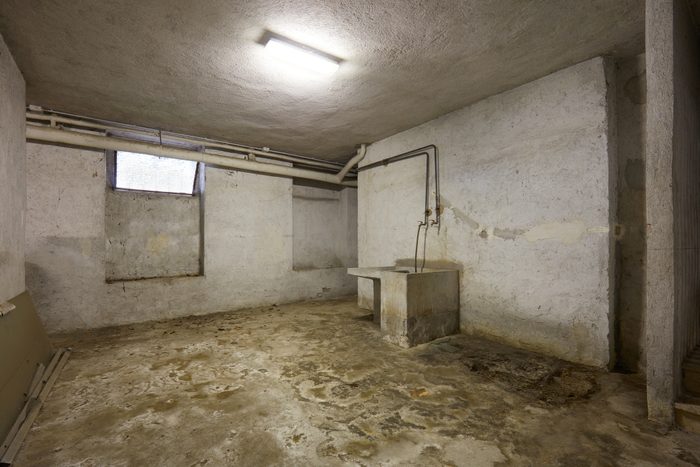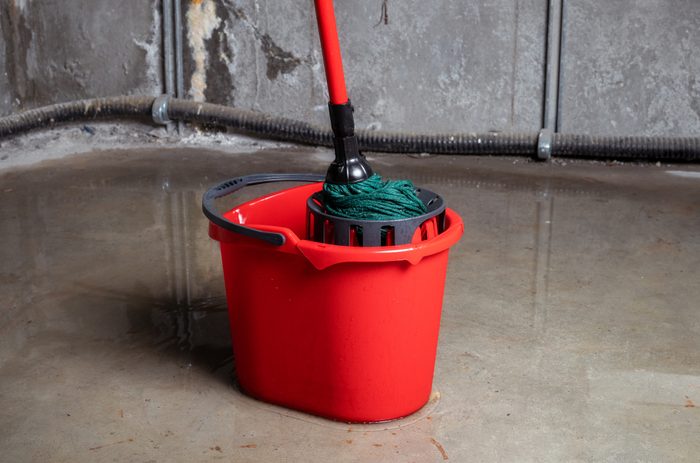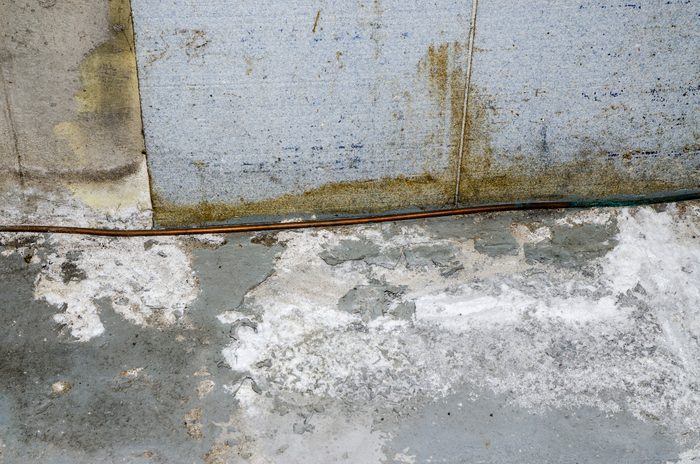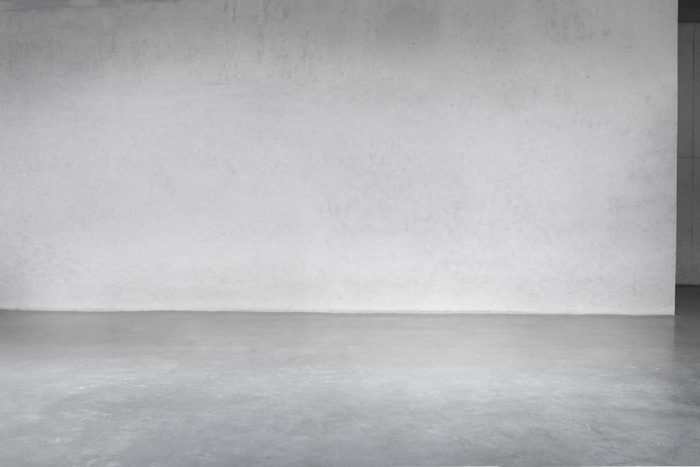Tools and Technique
To clean your concrete basement floor, you’ll need:
- Personal protective gear (PPE);
- Broom;
- Scrub brush;
- Bucket;
- Mop or squeegee;
- Cleaner of choice;
- Hot water;
- Room fans.
Before starting, gather your PPE. That means gloves, eye protection, closed-toe shoes, long-sleeved shirt and pants. Consider wearing a dust mask while sweeping, and open basement egress windows if possible. Have your fans handy for drying and ventilation.
Then, unless you’re just spot-cleaning, resist the urge to clean around things on the floor. Get everything up and out of the way. If you don’t, the floor will look different underneath your stuff, and you’ll damage your boxes, sports equipment and holiday decorations with water and cleaners.
- Sweep the entire floor to remove dirt, dust, cobwebs and random debris, but avoid disturbing active mold colonies.
- Add hot water to your bucket, and cleaner according to the manufacturer’s directions.
- Test a small area before proceeding with the entire floor.
- Start scrubbing from the farthest corner, working your way to the floor drain. Work in sections so the floor doesn’t dry before you can get back to rinse it.
- Rinse well with a fresh bucket of water and a mop, or squeegee. Direct the rinse water into the drain.
- Dry the floor completely before re-stacking your boxes and other things. If not, you’ll trap moisture, leading to mold problems.
All-Purpose Cleaners and Degreasers
For dirty, grimy floors, start with an all-purpose cleaner and degreaser that works on concrete. (Check the label.) Manfredini says commercial products like Pine Sol and Krud Kutter are safer than other common concrete cleaners, like acids, and they work great.
Dilute as directed on the label to clean the entire floor, or apply full strength to target stains. Rinse well. All-purpose cleaners are good for unsealed and sealed concrete floors.
Detergent or Dish Soap
If your concrete floor in the basement is just lightly dirty, clean the whole thing with dish soap or detergent and hot water. Dish soap like Dawn and water has grease-cutting power, and it’s safe and easy to use.
This method works great for the entire floor before targeting specific areas with more powerful, stain-specific cleaners. Use soap and water on all concrete floors, but always rinse well.
Antimicrobial Cleaner
If there’s mold on your concrete basement floor, you need to clean it and remove the moisture source causing the mold to grow. Mold spores that find moisture — say, from a leaky pipe — will take root and establish a colony. If you clean the mold and don’t fix that pipe, the mold will return.
Manfredini says if you see mold growth on your concrete, test it before cleaning. Simple at-home test kits will tell you whether the mold is dangerous. Once you know it’s not toxic, Manfredini recommends applying Krud Kutter or Concrobium Mold Control to eliminate mold and remove stains left behind on your concrete. Avoid bleach, Manfredini says.
White Vinegar
Does your basement floor have a white, powdery residue on the surface? That’s called efflorescence. It happens when water seeps through the concrete and evaporates, leaving salts behind.
Sometimes you can simply brush it away it with a stiff-bristled brush and some elbow grease. If that’s not cutting it, DiBara says you can try white vinegar. Scrub the white, streaky substance with a 50/50 mixture of white vinegar and water. Rinse well. Vinegar is a mild acid and may etch concrete if not rinsed away.
Enzymatic Cleaners
Clean pet urine and other protein-based stains off your concrete basement floor with enzymatic cleaners like Angry Orange and ACT Concrete Cleaner. Enzymes target specific molecules in these stains, breaking them up so they can be rinsed away, according to the American Cleaning Institute.
Some enzymatic cleaners can just be sprinkled on and left to do the work. Others may require scrubbing and rinsing. Always read the label.
Muriatic Acid
Muriatic and other powerful acids should be used sparingly, if at all, according to the Concrete Network. Unless you do the whole floor, you risk etching certain spots, which will look different. Acids won’t penetrate sealant, so only use this on unsealed concrete floors.
Concrete is made from aggregate, aka sand and rocks, water and Portland cement. (Though we sometimes use “cement” and “concrete” interchangeably, cement is the binder that holds concrete together.)
When concrete is exposed to acid, a chemical reaction occurs and erodes the surface. Basically, acid “cleans” the floor by removing its top layer. Prolonged or indiscriminate use can accelerate this erosion.
DiBara says muriatic acid works on efflorescence and mineral deposits, but be careful working with acids. Always start with water in your bucket and pour the product into the water, not the other way around. Acids react violently with water, and pouring acid into water ensures that the mixture stays diluted. This reduces the chance the acid splashes up into your face when pouring.








